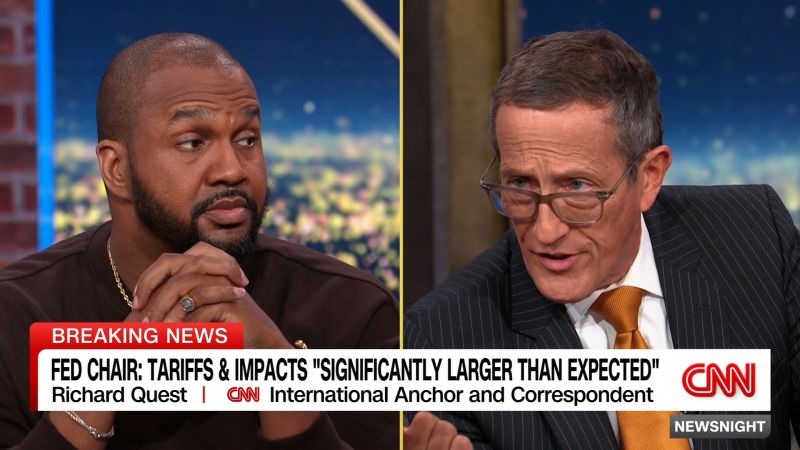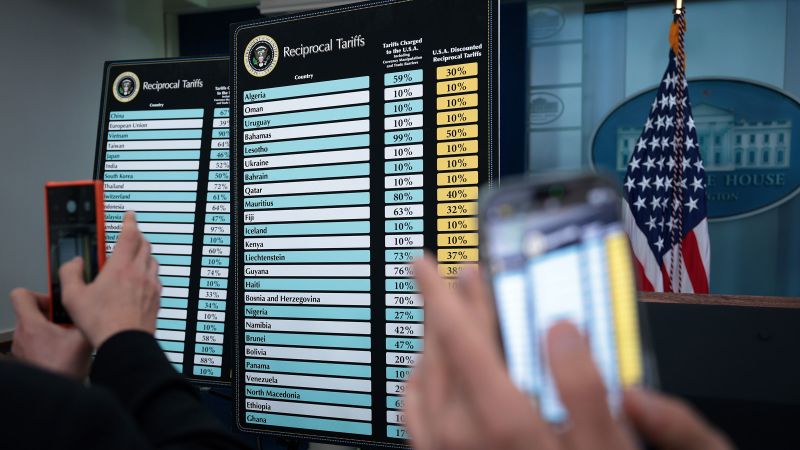Trump's Tariffs Impact on Global Markets

The Economic Fallout of Trump's 2025 Tariffs: A Comprehensive Analysis
In early April 2025, President Donald Trump's administration implemented a series of sweeping tariffs, sending shockwaves through global financial markets and sparking fears of an imminent recession. This article delves into the multifaceted impacts of these tariffs, examining their effects on U.S. industries, international trade relations, and the overall economic landscape.
The Tariffs Unveiled: "Liberation Day" and Reciprocal Measures
On April 2, 2025, President Trump announced the details of his tariff plans during a "Make America Wealthy Again" event. He invoked the International Emergency Economic Powers Act of 1977 to impose trade restrictions, characterizing decades of U.S. trade deficits as a result of foreign exploitation. The new measures included a universal 10% tariff on nearly all imports, significantly increasing the average tariff rate from 2.5%. Additionally, reciprocal tariffs as high as 50% were levied on countries with persistent trade deficits with the U.S., including Vietnam (46%), China (34%), Taiwan (32%), India (26%), and Japan (24%). Certain goods already subject to Section 232 tariffs, such as automobiles, aluminum, and steel, were exempt from the new regime.
Market Turmoil and Economic Concerns
The announcement triggered immediate turbulence in financial markets. On April 4, 2025, the Dow Jones Industrial Average plummeted 2,230 points (5.5%), while the S&P 500 plunged 6%. The tech-heavy Nasdaq Composite Index also fell sharply, entering bear market territory with a decline of over 20% from its recent high. The Russell 2000, an index of small-cap stocks, dipped more than 4% and also entered a bear market. U.S. Treasury yields shrank as investors sought safe-haven assets, with the 10-year yield declining to 4%, the lowest since October.
Experts voiced concerns about the potential for a U.S. recession. JPMorgan Chase raised its probability of a U.S. and global recession to 60%, while Goldman Sachs increased its estimate to 35%. These institutions cited growing tariff-related stress on markets and investor confidence as key factors. Federal Reserve Chair Jerome Powell acknowledged that the tariffs would likely raise inflation and that the economic effects would be "significantly larger" than previously anticipated.
International Responses and Retaliation
China responded swiftly to the tariffs, announcing a 34% tariff on U.S. goods, effective April 10. China's Finance Ministry urged the U.S. to cancel its unilateral tariff measures and resolve trade differences through consultation. The European Union and Canada also vowed to install countermeasures. Two notable exceptions were Canada and Mexico, which remained subject to the previous 25% tariff regime related to concerns about illicit drugs and illegal immigration.
Impact on U.S. Industries
The tariffs are expected to have a wide-ranging impact on U.S. industries. Agriculture, in particular, is likely to suffer, with exports to China potentially becoming uncompetitive due to the added tariffs. Soybean prices plunged following the tariff announcement, as China is a major importer of U.S. soybeans. The energy sector, especially in states like Texas and Louisiana, could also be affected, as China imported $14.7 billion of fuels and oils from the U.S. last year. The tariffs could impact the oil and gas industry in those states. The tariffs could also affect the electrical machinery sector, as the U.S. exported some $15.3 billion in electrical machinery to China last year. Additionally, China has restricted exports of rare earth elements, which are critical to semiconductor manufacturing and other high-tech industries.
The Pharma Sector in Peril
Despite initial relief that the pharmaceutical sector was spared, President Trump declared that pharma tariffs were imminent at levels "you haven't really seen before." This announcement sent shares of major generic drug makers and contract manufacturing organizations plummeting. India's pharma exports to the U.S. stood at a robust $12.8 billion in 2024, making it a significant segment to be targeted for tariffs. However, analysts note that imposing tariffs on generic pharma would be counterproductive, as Indian firms offer lower costs, greater USFDA-approved manufacturing capacity, and critical scalability that the U.S. simply can’t do without, with savings to the US healthcare sector topping $400 billion annually.
The Debate Over Reshoring and Mineral Dependency
The Trump administration's push to bring manufacturing back to the U.S. raises concerns about electricity and mineral demands. China dominates global refining for critical minerals, with market shares ranging from 50% to 90% for various minerals essential to industries like chip-making and energy. This dependency on Chinese refining poses a significant supply chain risk for U.S. industry. Experts argue that the U.S. needs to incentivize domestic mining and refining through tax cuts and deregulation to ensure access to critical minerals.
Expert Opinions and Analysis
Economists and market analysts have offered various perspectives on the potential impact of the tariffs. Some predict stagflation, characterized by rising prices and slow economic growth, unless the tariffs are paired with tax cuts and deregulation. Others warn of a potential US recession and a domino effect on IT hubs like Bengaluru and Pune, India, where the real estate market is closely linked to the IT sector. Still others point to the impact that tariffs can have on markets, stating the shifts in risk sentiment take time to digest and tend not to be resolved quickly.
The Bottom Line
President Trump's 2025 tariffs have triggered a complex web of economic consequences, from market volatility and recession fears to international trade disputes and industry-specific challenges. The long-term effects of these policies remain uncertain, but they underscore the interconnectedness of the global economy and the potential for trade measures to have far-reaching implications.











